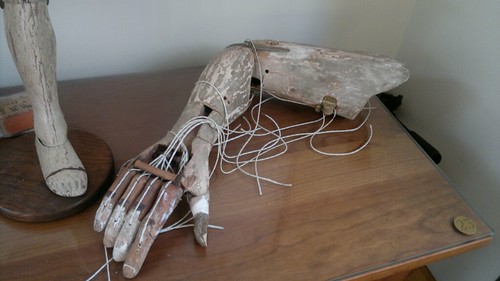Model makers from Industrial Light and Magic gathered at this year’s Maker Faire and discussed their favorite tips, tricks and techniques for building models. Tested has the complete story, filled with lots of great photographs. There’s a ton of useful information here, as well as lots of good stories from the filming of the various Star Wars films.
Speaking of Maker Faire, the Make Magazine blog had a writeup on the Alamance Makers Guild at this year’s Makers Faire NC. I’m a member of the AMG, and though I couldn’t be at the fair, this article shows off some of the work of my fellow members.
Jay Surma has been documenting the build of a new sculpture of a Dungeons and Dragons character in great detail. In the seventh part, he tackles the mold making process. It’s a great look at a two-part matrix mold. If you’ve never seen a matrix mold being made (I don’t think I’ve ever seen one being made in person), check it out, because it’s a handy technique to keep in mind.
Popular Woodworking has a whole article devoted to sweeping, with the wonderful title “To Sweep; to Sweep: Perchance to Clean“. It makes the good point that apprentices are often tasked with sweeping so they can get to know the shop and see what everyone is working on.
Over at the Lost Art Press Blog, Jeff Burks has reprinted this 1907 list of Don’ts for Makers of Models and Moulds. Most of them are apropos to any kind of props shop. I especially like these two:
DON’T fail to have confidence in yourself, but
DON’T think you cannot improve. Try to do better each day.
Have a great weekend, everyone!


